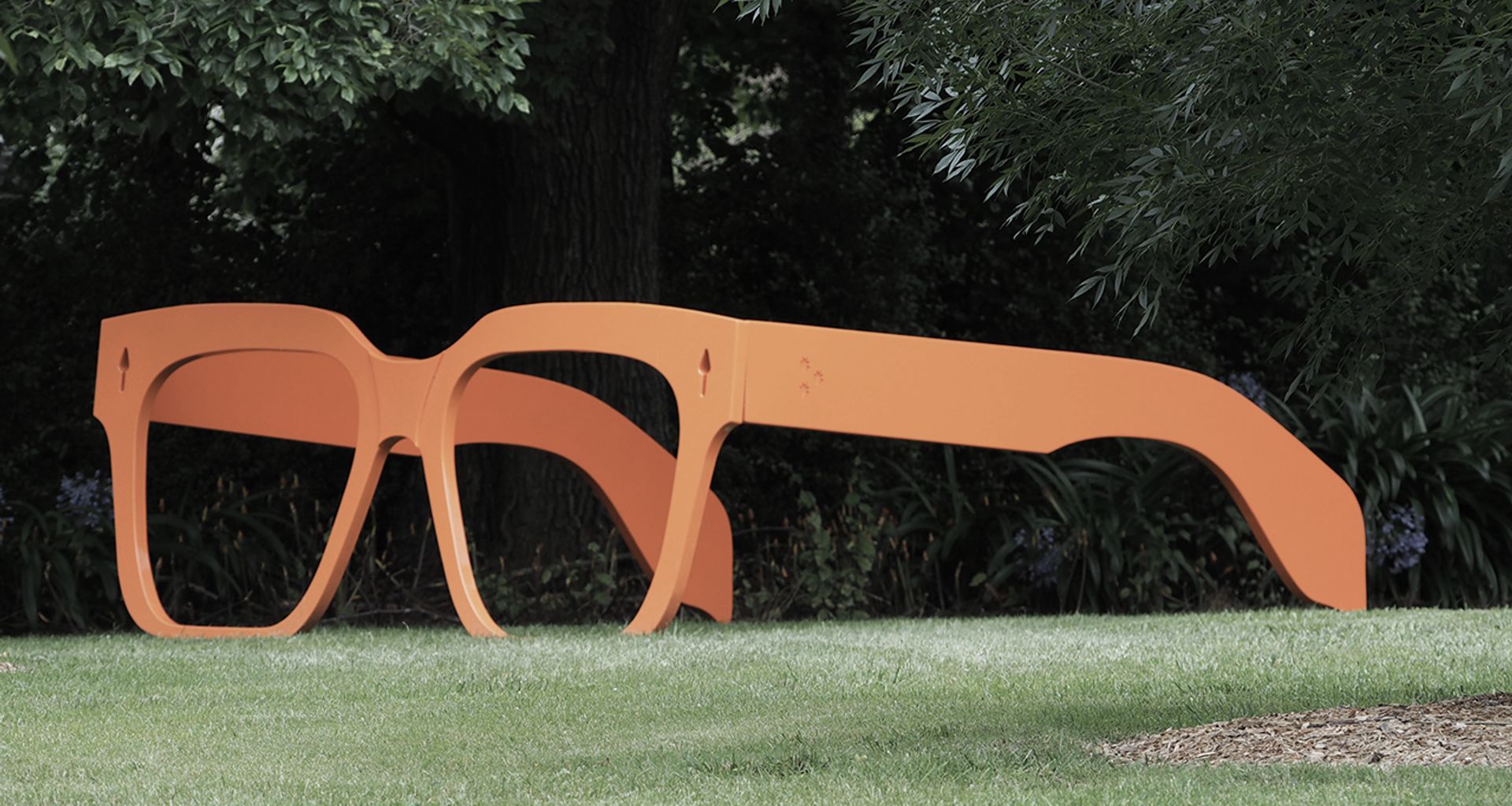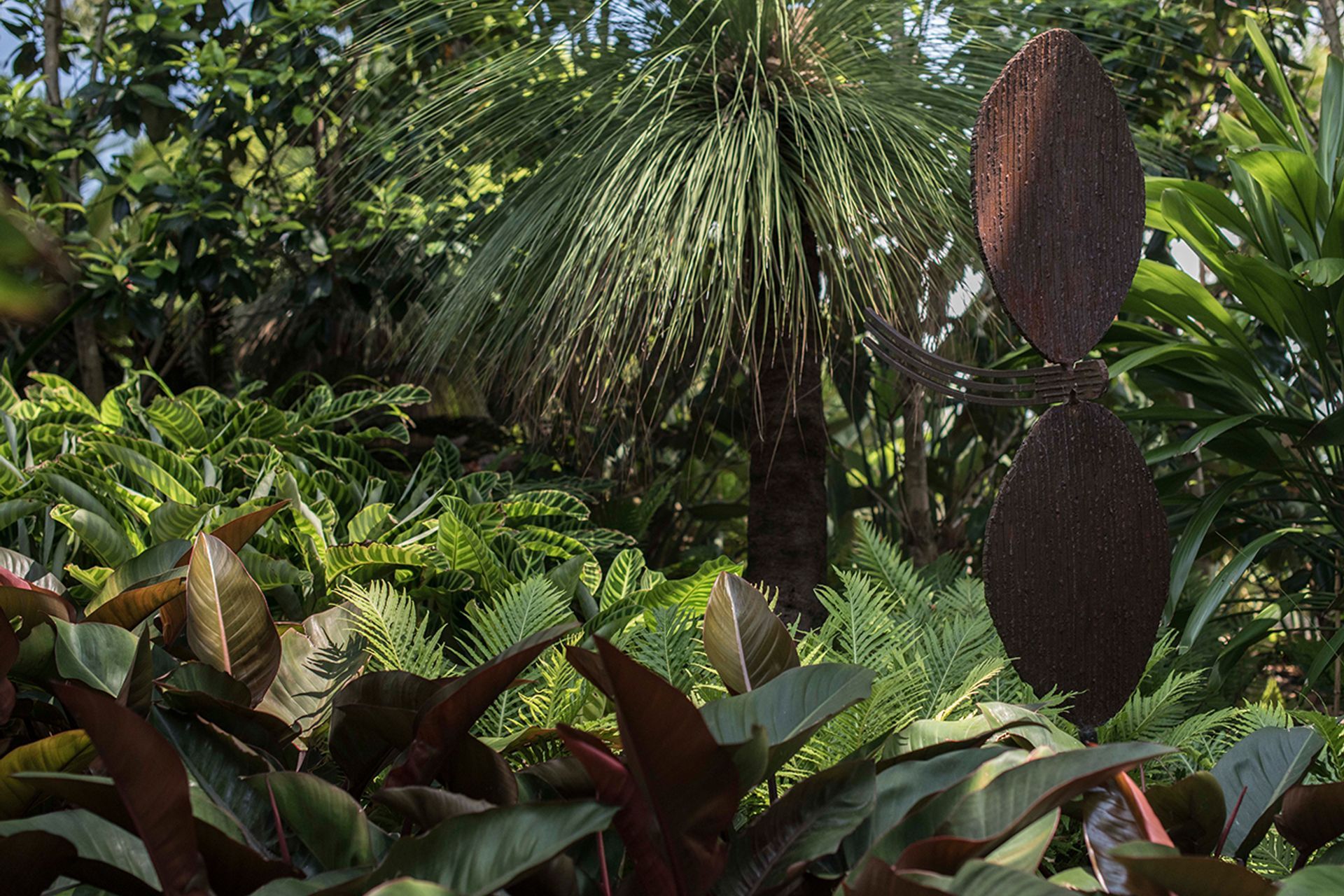The shape of things to come: Introducing sculpture to the garden

The idea of sculpture in the garden conjures up images of grand European estates with sweeping vistas punctuated by neo classic figures or larger-than-life abstract shapes cast in bronze. But Creative Director at Secret Gardens, Matt Cantwell, says increasingly, sculpture is being understood as a great design device, however large or small your outdoor space is.
“The garden design brief has become more complex as clients seek a true expression of themselves in the garden,” he says. “We are shifting to ensure that the experience of their homes is as intense outside as it is inside.
“If you are a lover of art and your walls inside are adorned with art, why wouldn’t you want to continue that outside?”
Where once a large decorative pot or a water feature would have been the go-to outdoor ‘bling’, a well chosen piece of sculpture can serve the same purpose, only in a more sophisticated way. Placed well, it is a useful focal point in the garden, whether you’re working with acreage or a courtyard space. If it is positioned so that it is visible from inside the house as well as outside, it can work twice as hard.
“We are always looking for points of interest that provide a view from inside the house, to enjoy from a distance or as a means to draw you further into the garden,” says Matt. “It could be a larger pot but certainly a sculpture is a more evocative addition to the garden.”
Just as you would with indoor art, Matt says you should choose something that has genuine meaning for you, that you feel a connection with, rather than something that simply fills the space.
“It can be classic, cheeky or outrageous but what is important is that it is a reflection of your taste,” says Matt.
While some sculptures come with substantial price tags, they really don’t need to be expensive – or even too serious. Over the years, Matt has placed everything from works by pre eminent Australian sculptor Greg Johns worth tens of thousands of dollars through to found objects in gardens to create focal points and conversation starters.

“One of the best sculptures I had was a piece of junk off a ship that I found in a secondhand place at Stanmore,” he says. “I stuck it on a plinth and placed it in a strategic spot in the garden. I had so many questions about it and it cost me $100.”
And if you can’t find something you like, you can have it fabricated for your specific needs.
“There are lots of ways to achieve the sculpture you want, whether you are purchasing or having it commissioned with a recognised artist or we are making it ourselves, like the pair of (oversized reading) glasses we had made.”
Given it will live outside, it’s worth paying some heed to the materials. While some might delight in their sculpture ageing in the elements, others may prefer that their piece of art stays in pristine condition. Lighter weight materials will also offer you some flexibility to move the sculpture around the property, or even to your next home.
“Stainless steel is very durable but it can require cleaning,” says Matt. “Bronze is often the best. It doesn’t get damaged and it ages well over time.”

Corten or mild steel, which both rust to tones of orange and brown before self sealing, are great options for more natural, meadow style landscapes, while the range of colours afforded by powder coated steel can offer a contemporary edge. Natural materials like stone and wood are traditional choices for sculpture, but both come with their own issues.
“Carved stone is very durable but very heavy,” says Matt. “You have to be careful where it’s placed. With timber, it’s about making sure it’s durable and it will last over time.”
Just as you would do when buying art for your interior spaces, Matt says it’s worth taking your time to find the piece of garden sculpture that speaks to you.

“We will nominate the location (in the garden) and we will show clients options based on the way we perceive their taste, often in keeping with the interiors,” he says. “But you need to have a connection with it. Some clients will make a decision quickly but often it can take years.”
- Low maintenance magic. Unlike water features or even a standard tree in a pot, sculptures generally require very little upkeep, aside from the occasional wipe down.
- Roads less travelled. It’s not unusual to fall in love with a piece of sculpture you’ve seen while travelling in Bali or Europe. Before you sign up for the shipping, make sure you understand the context it’s going into.
- Buy first, build later. If you already have a sculpture you love, often it’s possible to design the garden around it.
- Not so serious. Just because it’s art doesn’t mean it can’t be fun. Look for sculpture that brings you joy, surprise and delight each time you see it.

